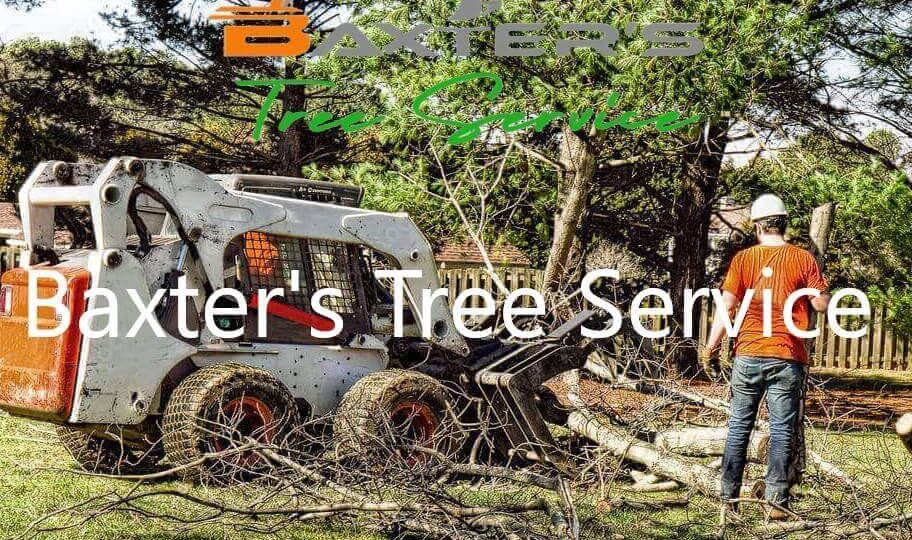
Trees are beautiful and have functional features around your home or workspace, such as helping keep the environment around you cool and safe, especially during the summer. But it would help if you noticed that trees become damaged by storms, pests, or other issues. Knowing who is responsible for fallen tree removal saves time and headaches. In this blog post, we will examine who is responsible for fallen tree removal.
How to Determine the Responsibility for Fallen Tree Removal
A tree is a public land property, and the land where it grows belongs to the owner. The burden of removing a fallen tree is different depending on its owner. Various states in the world provide different laws related to who is responsible for fallen tree removal.
-
Legal Framework
In general, laws regarding fallen trees differ by state. However, when a tree falls due to a natural event such as a storm, it’s regarded as an act of God, and the property owner is responsible for removing the tree. Local ordinances may impose regulations related to tree removal, such as requiring permits or disposal methods. So, a legal framework is required for whoever the tree belongs to.
-
Insurance Policies
Insurance policies must be considered before discussing homeowner’s insurance coverage.
-
Homeowner’s Insurance Coverage
Homeowners typically cover all the damage caused by fallen trees, such as removal costs and repairs to structures like homes or fences.
-
Common Exclusions
Some standard exclusions from homeowner’s insurance coverage include damage caused by detached structures, landscaping, and vehicles.
-
Filing Claims for Fallen Trees
To file an insurance claim for fallen tree on public land, you first need to document your damage with photos, gather relevant receipts, and then contact your insurance provider.
Scenarios of Responsibility
Let’s discuss some scenarios of Responsibility.
-
Private Property vs. Public Property
If a tree falls on private property, the property owner is typically responsible for removing any damage related to the tree. On the other hand, on public land, the municipal authority is responsible for cleaning up trees and any related damages.
-
Neighbor Disputes
When a tree from someone’s property destroys a neighbor’s house, the liability usually rests with the property owner where the tree originated. So, legally, you must seek permission to keep the wood from a neighbor’s fallen tree.
-
Weather-Related Incidents
In storm-related incidents, liability for damaged or fallen trees typically obeys the same principles as general tree falls. Property owners are responsible for clean-up and damages, and other factors are also involved.
Legal Rights, Responsibilities, and Actions
We also must examine the legal rights and actions of those responsible for removing fallen trees.
-
Overhanging Branches
Property owners are responsible for trimming overhanging branches that extend beyond their trees onto their neighbors’ property. Homeowners have the legal right to trim branches, even if the tree belongs to a neighbor.
-
Tree Trimming and Power Lines
Utility companies are responsible for tree trimming and power line maintenance. They have policies to ensure safety and prevent outrages.
-
Utility Company Policies
Utility companies implement policies for tree trimming to avoid hazards and ensure uninterrupted service. Regular inspections and trimming schedules are required to mitigate the risk associated with power outages.
-
Tree Root damage
The Responsibility to determine damage caused by tree roots is complex and depends on factors such as property boundaries and negligence. Usually, property owners are responsible for damage caused by trees.
-
Legal Actions and Disputes
To sue a neighbor for fallen trees, evidence of negligence or failure to address known damages must be presented. Legal grounds also include property damage, personal injury, or nuisance claims. Disputes are based on negligence or property ownership.
-
Permits and Regulations
Permits for tree removals are needed to ensure compliance with local regulations, especially for trees in protected areas. Sometimes, certain species may be protected by law, making it illegal to cut them down without permission.
Costs and Financial Considerations
The cost of tree removal is affected by various factors, such as the tree’s size, height, and condition, obstacles such as power lines and buildings, and local labor rates. The equipment required and any needed permits also influence the overall cost.
On average, the cost of simple tree removal for a medium-sized tree varies from $300 to $1200, while for large trees, it varies from $1500 to $3000 or more. The price is completely dependent on the location and service provider you choose.
-
Homeowners Insurance and Tree Removal
Home insurance may pay to remove a dead tree if it damages your house. But if a tree is healthy and you want to remove it to stop damage, insurance would not help. You need to talk to the insurance company for more details.
Preventative Measures and Maintenance
Let’s jump into the preventative measures and maintenance about who is responsible for removing the fallen trees.
-
Regular Tree Maintenance
Routine tree inspections are essential because they help to keep trees healthy and prevent accidents. Inspections can also figure out signs of disease, decay or weakness before they become any sort of serious problem. Regular maintenance such as pruning dead branches, also offer health growth and lessen the risk of falling limbs.
-
Hiring Professional Services
Professional tree services offer expertise and equipment thio remove or handle trees safely. They play a crucial role in maintaining the tree’s health, recommending needed actions, and performing tasks such as pruning or removal efficiently and safely.
When choosing a tree removal service you must check credentials such as certification, insurance and positive reviews from past customers. Ask for quotes from multiple companies and be aware of low prices as they exhibit a lack of insurance. So make sure you choose a company that listens to your concerns and explains their process clearly.
Special Considerations
Fallen Trees on Road
When a tree falls on a road, the responsibility for its removal typically falls on the local authorities, such as the city’s public works or highway department. The process usually involves immediate action, notifying the appropriate agencies, and dispatching trained personnel to assess the situation, secure the area, and remove the tree safely to restore traffic flow. Once the tree is removed, property owners may wonder what to plant after tree removal to restore greenery or prevent soil erosion. Choosing the right plants can help stabilize the soil and enhance the landscape while ensuring a smooth transition after tree removal.
Choose Baxter’s Tree Service- Best for Tree Removal and Cutting
When finding out who is responsible for a fallen tree removal, you will need to figure out what caused it to fall and who the tree belongs to. The best way to avoid the hassle of dealing with tree failure is to collaborate with Baxter’s Tree Service. We are the best for tree removal and cutting if you want to ensure the health, safety, and beauty of your property for years to come.
If you are concerned about the possibility of tree removal on your property or you are looking for a tree removal service, contact Baxter’s Tree Service.
FAQ’s
Who is Responsible for Fixing a Tree That Falls on a House?
If a tree from nearby or otherwise public land falls on your house, then community officials are responsible for removing the tree and all the costs related to its removal. It’s our Responsibility to get trees removed.
Who should call for fallen tree removal near me?
If you want peace of mind that your tree removal will be handled safely, call a fallen tree removal service near you. Tree removal companies in your area have the necessary skills and training to hold your fallen tree immediately.
Will Homeowners Insurance Cover Dead Tree Removal?
Because homeowners insurance does not entirely cover the removal of dead trees, a tree that was completely damaged by the storm but did not fall entirely will not be covered.
Whose Responsibility is it to Maintain a Tree?
Property owners are responsible for maintaining their own property, e.g., if they have any trees on the property. If you have a question about who is responsible for a tree, then the location of the trunk trees will determine who owns the tree.
Who is Responsible for a Dead Tree?
Your neighbors are responsible for dead trees, especially if a tree falls onto your property due to your neighbors’ negligence. In this case, they will be held responsible for damages.

